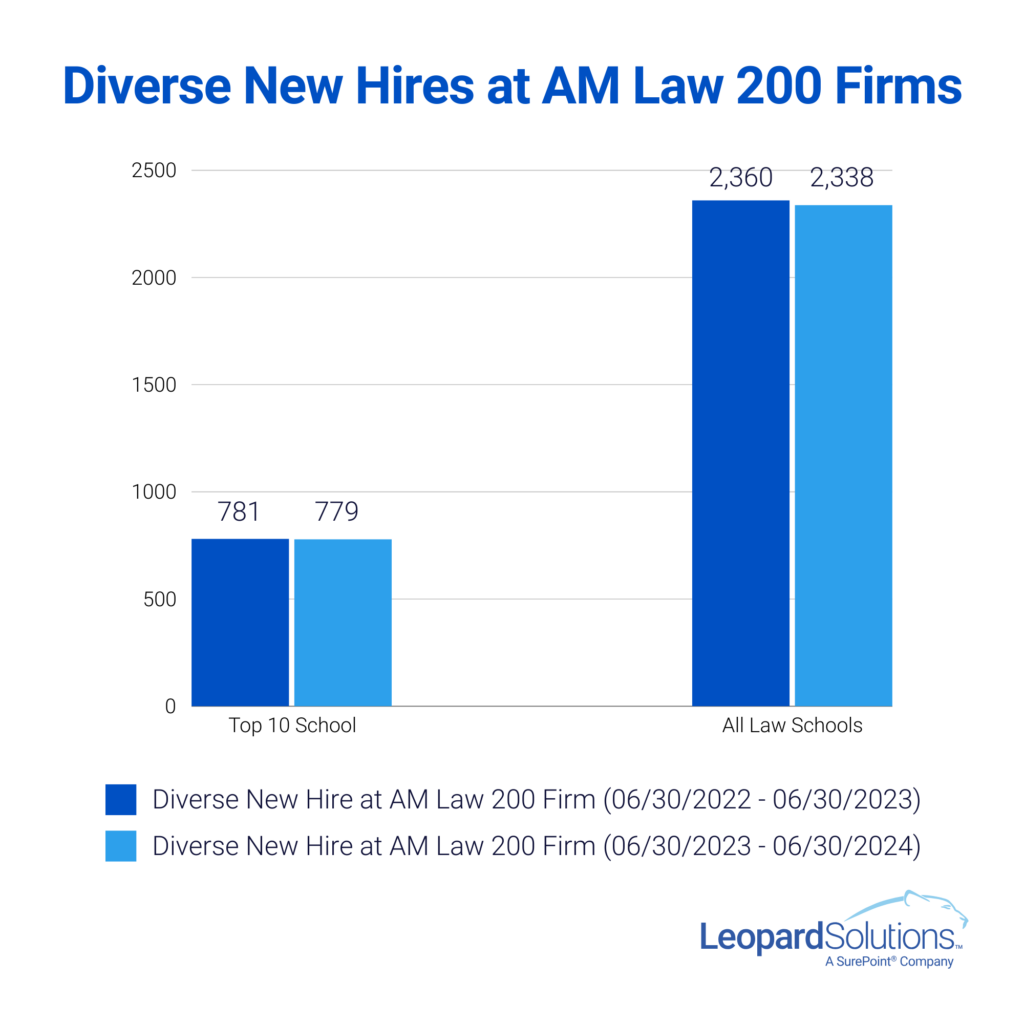Recent reports have painted a positive picture for law firms, with rising revenues and billing rates. According to the Wells Fargo Legal Specialty Group’s 2024 midyear survey, law firms experienced a 11.4% revenue increase in the year’s first half, mainly driven by an 8.8% year-over-year rise in average standard billing rates.
Law schools are seeing a surge in applications to meet the growing demand for legal talent. Reuters reports that law school applications for this fall increased by nearly 13%, the largest year-over-year growth since 2002, based on data from the Law School Admission Council. A total of 71,048 people applied to ABA-accredited law schools, up from 62,964 in 2020. Although this is still below the peak of 100,601 applicants in 2004, it marks the largest applicant pool in a decade. Not all law schools experienced this upward trend; while diversity increased at many institutions, the Top 10 schools declined.
The positive momentum extends to diversity in applicants. Reuters also highlighted a trend of increasing applications from underrepresented groups. Data from the Law School Admission Council shows that Hispanic applicants are up 8.9%, Black applicants increased by 6.7%, and Asian applicants rose by 6.1%. White applicants, in comparison, saw a smaller 3.1% increase.
This trend comes despite concerns that the U.S. Supreme Court’s June 2023 ruling, which ended the consideration of race in college admissions, might deter diverse prospective law students from applying. However, that has not been the case. The rise in minority applicants is part of a broader trend of increasing diversity in law school classes. Over the past three years, law schools have enrolled their most diverse first-year classes on record. In 2023, 40% of all first-year law students were people of color, including Hispanic, Black, Asian, Native American, Native Hawaiian, or Other Pacific Islander students.
There’s reason to approach some of these numbers with a healthy degree of skepticism. As the New York Times recently pointed out, many of the seemingly positive or steady figures may be due to inconsistent reporting methodologies, the relatively recent end of affirmative action—whose full impact may take more time to manifest—and incoming students choosing not to disclose their ethnicity on applications, fearing potential bias in race-conscious admissions practices.
To gain insight into how this trend is playing out at the firm level, we analyzed Leopard Solutions’ data to track the number of ethnically diverse new hires from the top 10 law schools entering Am Law 200 firms each quarter since the U.S. Supreme Court’s June 29, 2023, decision to end affirmative action in college admissions. The rationale was that this would provide a more accurate reflection of market conditions, as the largest firms traditionally recruit from the most prestigious schools. Regardless of broader minority enrollment trends, these metrics would reveal the true composition of Big Law candidate pools.
We found a slight decline in ethnically diverse new hires at Am Law 200 firms when comparing the year following the Supreme Court ruling to the prior year. For students from the top 10 schools, hires decreased from 781 to 779 (a 0.26% drop), and for all institutions, the number fell from 2,360 to 2,338 (a 1% decrease). While the differences are minimal, it remains to be seen if these margins will widen over time. This stability could suggest that law schools employ creative recruitment strategies to maintain diversity, even without a legal mandate. Notably, non-diverse hires dropped by 2% across the top 10 and all law schools, which may point to a broader pullback in Big Law hiring post-pandemic, rather than the result of rising law school applications or the court’s decision.

In conclusion, while law school applications are surging, driven by rising demand for legal talent and growing diversity among applicants, the long-term impact on law firm hiring remains uncertain. The slight decline in ethnically diverse hires at Am Law 200 firms suggests that, despite the end of affirmative action, law schools are resilient and finding ways to recruit a diverse student body. This stability in diverse hiring is occurring against a backdrop of an overall slowdown in BigLaw recruitment, likely influenced by broader market conditions rather than an immediate response to the Supreme Court ruling or an influx of new law graduates. Whether this surge in law school matriculation will translate into a meaningful shift in law firm diversity remains to be seen, and much will depend on how firms adapt to these evolving dynamics in the coming years.
